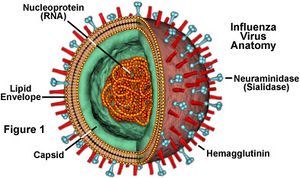Granuloma inguinale
From MicrobeWiki, the student-edited microbiology resource
Overview

Electron micrograph of the Ebola Zaire virus. This was one of the first micrographs taken of the virus, in 1976. By Dr. Frederick Murphy, now at U.C. Davis, then at the CDC.
By Emma Mairson
Granuloma inguinale (also known as donovanosis) is a sexually transmitted disease caused by the Klebsiella granulomatis bacteria. The pathogenic bacteria was formerly called Donovania granulomatis and Calymmatobacterium granulomatis [1].
Trauma Events
Include some current research, with at least one figure showing data.
Section 2
Include some current research, with at least one figure showing data.
Section 2
Include some current research, with at least one figure showing data.
Section 3
Include some current research, with at least one figure showing data.
Conclusion
References
Authored for BIOL 291.00 Health Service and Biomedical Analysis, taught by Joan Slonczewski, 2016, Kenyon College.
